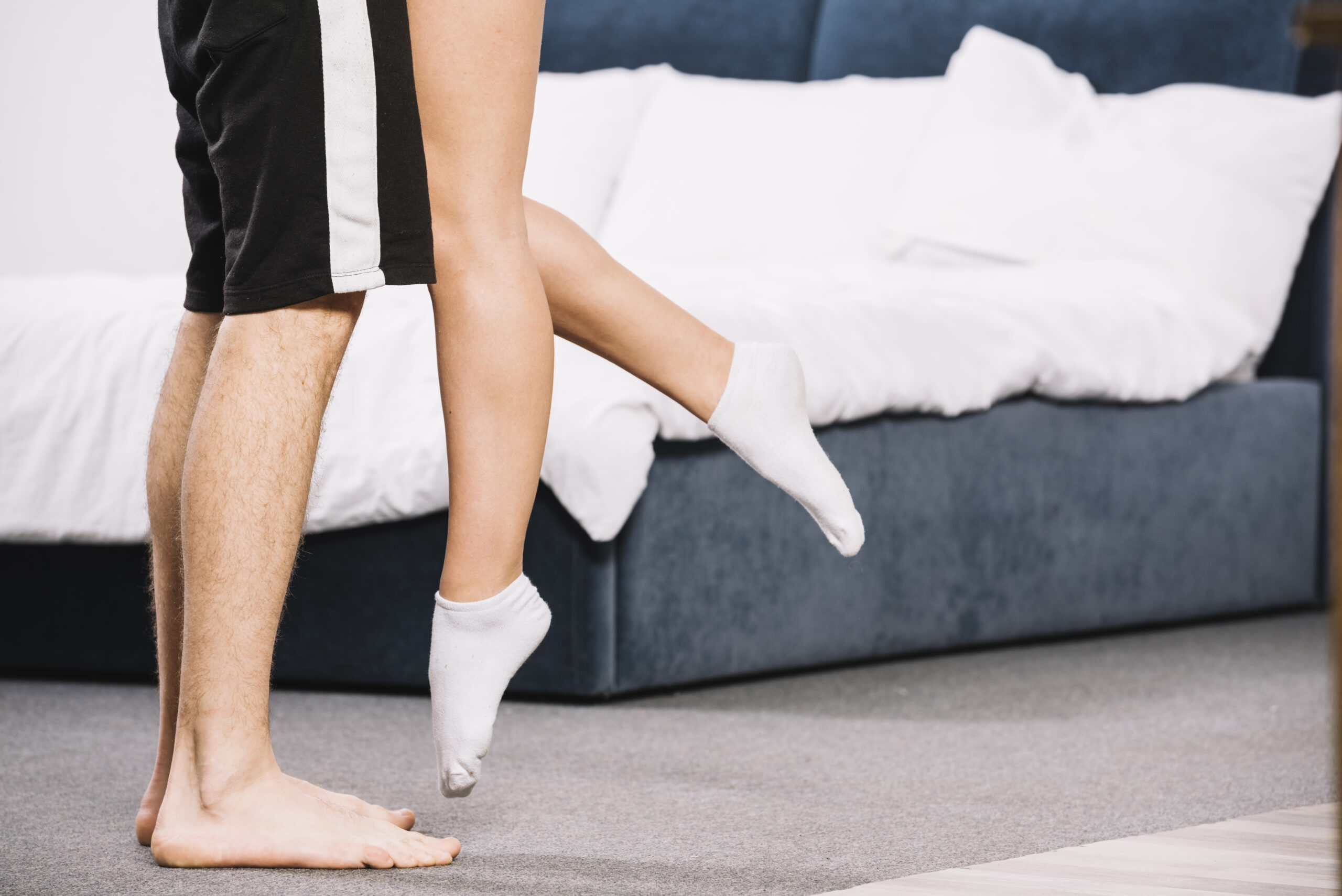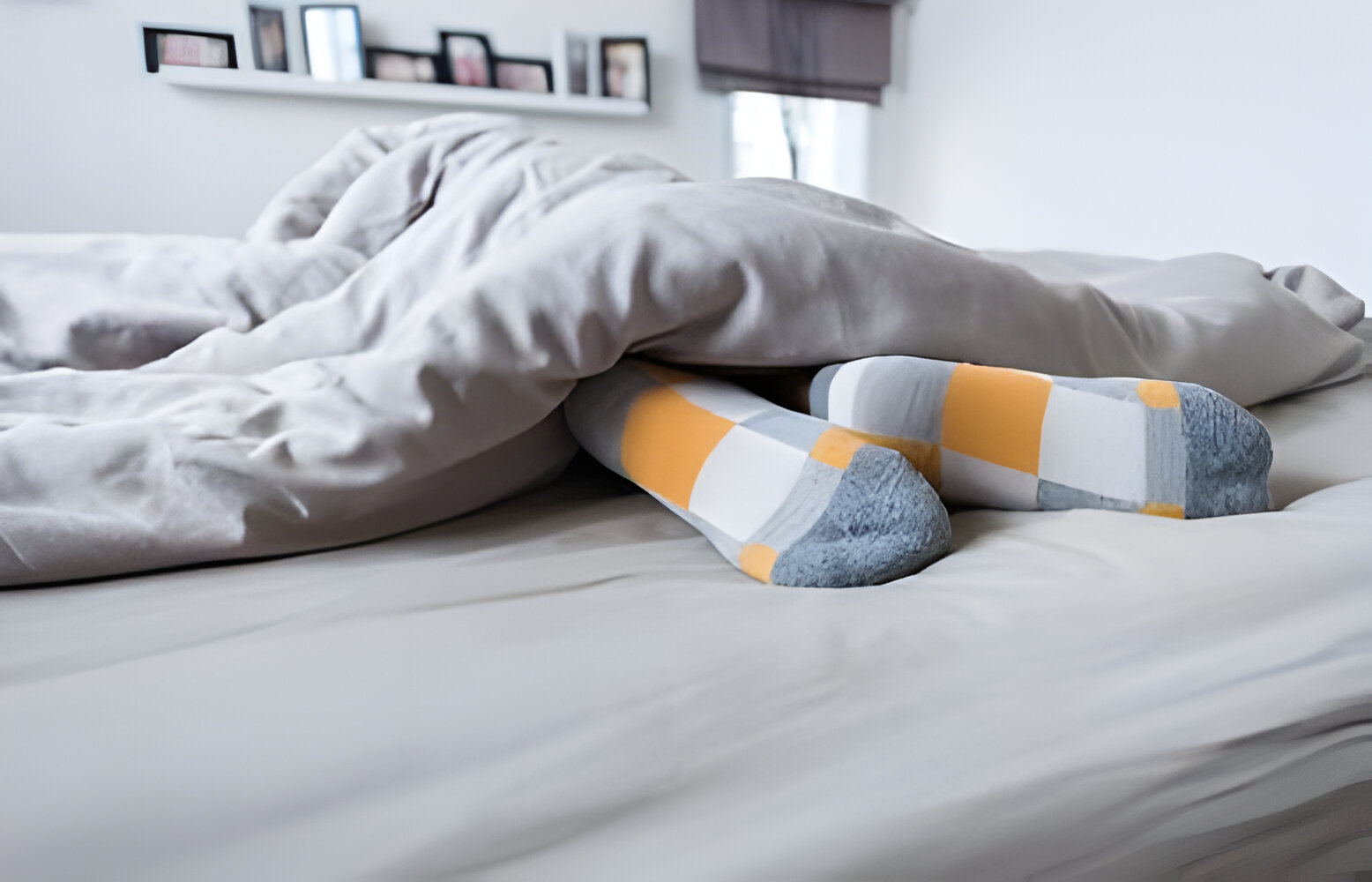Have you ever wondered if wearing socks while sleeping could improve your sleep quality? It might seem like an odd connection, but this simple habit can have a significant impact on how well you sleep. A good night’s sleep is crucial for overall health, and various factors, including what we wear to bed, can influence it. In this article, we’ll delve into the science of body temperature and sleep, explore the benefits of wearing socks while sleeping, and provide sleep sock recommendations. We’ll also discuss the potential downsides and offer tips on choosing the right socks. Whether you’re curious about the pros and cons of wearing socks to bed or looking for ways to enhance your nighttime routine, we’ve got you covered.
The Science of Body Temperature and Sleep
Explanation of Body Temperature Regulation During Sleep
Our body temperature plays a crucial role in the sleep cycle. It isn’t constant; instead, it fluctuates throughout the day and night. Understanding this can help us optimize our sleep environment.
- Core Temperature vs. Skin Temperature: Core temperature refers to the heat within your body’s vital organs, while skin temperature is the heat at the surface. Both are regulated by your body but can be influenced by external factors. Core temperature tends to remain relatively stable, while skin temperature can vary more significantly based on the surrounding environment and activities.
- Role of Thermoregulation: Thermoregulation is the process by which the body maintains its core internal temperature. It’s crucial for various physiological processes, including sleep. The body has an intricate system to manage temperature changes, ensuring that vital organs remain at an optimal temperature while allowing the skin to dissipate or retain heat as needed.
Impact of Body Temperature on Sleep Cycles (NREM and REM)
During sleep, our body undergoes various phases, each characterized by distinct temperature changes:
- Non-Rapid Eye Movement (NREM) Sleep: This phase includes several stages, with body temperature dropping progressively as we move from light sleep to deep sleep. The drop in temperature helps facilitate the onset of sleep and maintain sleep stability.
- Rapid Eye Movement (REM) Sleep: During REM sleep, body temperature regulation is less effective, and the temperature may rise slightly. This phase is associated with dreaming and increased brain activity.
Benefits of Wearing Socks While Sleeping
Heat Retention
One of the primary sleeping with socks benefits is heat retention, especially during cold nights. Wearing socks helps to keep your feet warm, which can promote overall body warmth and comfort.
- Explanation: Socks act as a thermal conductor, helping to maintain a consistent temperature. The warmth provided by socks helps prevent cold-induced wakefulness and ensures that your body remains in a stable state conducive to sleep.
- Benefits During Cold Nights: Keeping your feet warm can prevent disruptions caused by temperature fluctuations. When your feet are warm, it signals to your brain that it’s time to sleep, aiding in the process of falling asleep quicker and staying asleep longer.
Improved Sleep Quality
Several studies suggest that wearing socks to bed can enhance sleep quality by helping you fall asleep faster and stay asleep longer.
- Studies Showing Benefits: Research indicates that warm feet can help reduce sleep onset latency (the time it takes to fall asleep). For example, a study published in the journal “Nature” found that participants with warmed feet fell asleep faster and experienced more restful sleep.
- Enhanced Sleep Duration and Quality: Maintaining a consistent body temperature can result in fewer awakenings and deeper sleep. This consistent warmth helps to regulate the body’s internal clock, leading to improved overall sleep quality.
Reduction in Sleep Disorders
For individuals with certain sleep disorders, such as restless leg syndrome or chronic insomnia, wearing socks can offer relief.
- Benefits for Restless Leg Syndrome and Chronic Insomnia: The gentle pressure and warmth provided by socks can have a calming effect, reducing symptoms associated with these conditions. This can significantly improve sleep quality for those affected by these disorders.
- Calming Effect of Pressure on Feet: This pressure can help reduce feelings of restlessness and discomfort, allowing for a more peaceful night’s sleep.
Additional Strategies for Better Sleep
Aside from sleeping habits with socks, there are other effective strategies to manage body temperature and improve sleep quality:
- Maintaining a Cool Bedroom Environment: Keeping your room cool can complement the warmth of your socks. Aim for a bedroom temperature between 60-67°F (15-19°C) to create an optimal sleeping environment.
- Using Breathable Bedding: Choose materials like cotton or linen that help regulate temperature and wick away moisture.
- Taking a Warm Foot Bath Before Sleep: This can promote vasodilation (widening of blood vessels) and prepare your body for rest by increasing blood flow to your extremities.
- Staying Hydrated: Proper hydration helps regulate body temperature and supports overall bodily functions, contributing to better sleep.
- Avoiding Heavy Meals and Strenuous Exercise Before Bedtime: These can cause body temperature spikes that disrupt sleep. Eating light and engaging in relaxing activities before bed can promote better sleep.
Potential Downsides of Wearing Socks While Sleeping
While there are numerous benefits, there are also some pros and cons of wearing socks to bed:
Overheating
For some, wearing socks might lead to overheating, especially in warm climates or if you naturally run hot.
- Risks in Warm Climates or Naturally Hot Sleepers: Overheating can cause discomfort and disrupt sleep. It’s important to choose socks made from breathable materials and monitor your body’s response to wearing them at night.
Reduced Blood Circulation
Tight socks can impede blood circulation, leading to discomfort or health issues.
- Issues with Tight Socks: Ensuring your socks fit well is crucial to avoid these problems. Opt for socks that are snug but not too tight, allowing for proper blood flow.
Increased Risk of Fungi and Bacteria
Wearing socks that aren’t breathable can create a damp environment, promoting the growth of fungi and bacteria.
- Importance of Breathable and Clean Socks: Always choose socks made from natural, breathable materials. Change your socks daily and ensure they are clean and dry to prevent foot health issues.
Choosing the Right Socks for Sleeping
To maximize the benefits and minimize the downsides, selecting the right socks is essential.
Material Considerations
Opt for natural, breathable materials like cotton, merino wool, or bamboo.
- Natural, Breathable Materials: These materials help regulate temperature and wick away moisture, keeping your feet dry and comfortable.
- Avoiding Synthetic Materials: Synthetic materials can trap moisture and cause overheating, leading to discomfort and potential health issues.
Fit and Comfort
Ensure your socks are well-fitted and not too tight to promote good circulation.
- Importance of Well-Fitted, Non-Tight Socks: Proper fit enhances comfort and effectiveness. Look for socks with a gentle elastic band that doesn’t constrict your feet.
Conclusion
Wearing socks while sleeping can be a simple yet effective strategy to enhance sleep quality. From heat retention to improved sleep duration, the benefits are substantial. However, it’s important to choose the right socks and pay attention to your body’s needs. Experiment with different sleeping habits with socks to find what works best for you.
Frequently Asked Questions
Q1. Why does body temperature decrease before sleep?
Body temperature decreases as part of our natural circadian rhythm, signaling to our body and brain that it’s time for rest. This drop in temperature helps facilitate the onset of sleep.
Q2. What kind of socks are best for sleeping?
Socks made from breathable, natural materials like cotton, merino wool, or bamboo are ideal for sleep. These materials help maintain a comfortable temperature and prevent overheating.
Q3. Can wearing socks to bed help with specific sleep disorders?
Yes, wearing socks can help with conditions like restless leg syndrome and chronic insomnia by providing warmth and reducing restlessness, leading to better sleep quality.
Q4. Are there any health risks associated with sleeping with socks on?
While generally safe, wearing tight or non-breathable socks can cause issues like reduced circulation or foot health problems. Always choose breathable, well-fitted socks for sleep.
Q5. What are other effective strategies to manage body temperature for better sleep?
In addition to wearing socks, maintaining a cool bedroom, using breathable bedding, taking warm baths, and staying hydrated can help manage body temperature and improve sleep quality.

